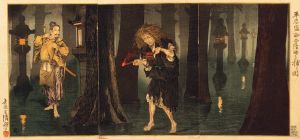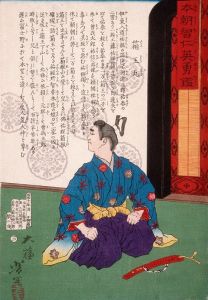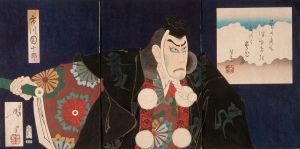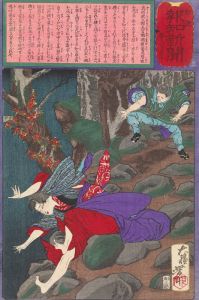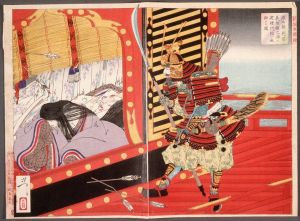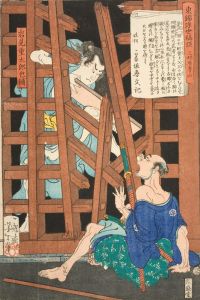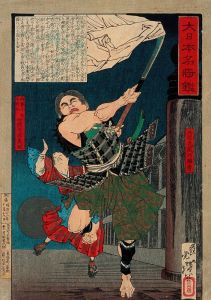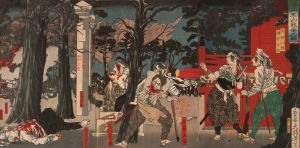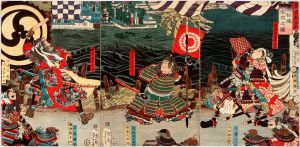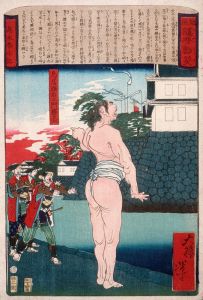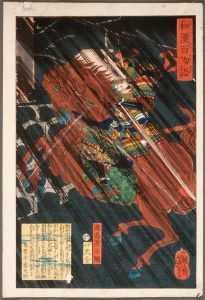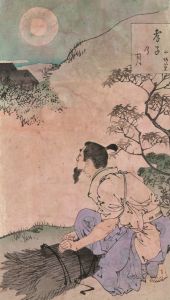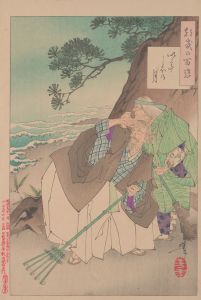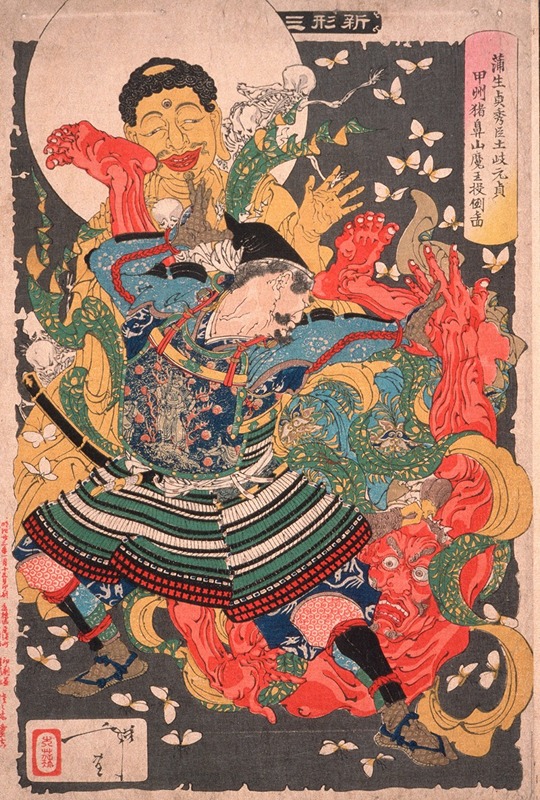
Gamō Sadahide’s Servant, Toki Motosada, Hurling a Demon King to the Ground at Mount Inohana
A hand-painted replica of Tsukioka Yoshitoshi’s masterpiece Gamō Sadahide’s Servant, Toki Motosada, Hurling a Demon King to the Ground at Mount Inohana, meticulously crafted by professional artists to capture the true essence of the original. Each piece is created with museum-quality canvas and rare mineral pigments, carefully painted by experienced artists with delicate brushstrokes and rich, layered colors to perfectly recreate the texture of the original artwork. Unlike machine-printed reproductions, this hand-painted version brings the painting to life, infused with the artist’s emotions and skill in every stroke. Whether for personal collection or home decoration, it instantly elevates the artistic atmosphere of any space.
Tsukioka Yoshitoshi was a renowned Japanese artist known for his work in ukiyo-e, a genre of woodblock prints and paintings that flourished in Japan from the 17th through 19th centuries. Yoshitoshi is often celebrated for his innovative approach to traditional subjects, his dynamic compositions, and his ability to convey emotion and drama in his works. One of his notable prints is "Gamō Sadahide’s Servant, Toki Motosada, Hurling a Demon King to the Ground at Mount Inohana."
This artwork is part of Yoshitoshi's series "New Forms of Thirty-Six Ghosts" (Shinkei Sanjūrokkaisen), which was published between 1889 and 1892. The series is a collection of supernatural and ghostly tales depicted through Yoshitoshi's vivid imagination and masterful technique. Each print in the series illustrates a story from Japanese folklore, history, or literature, often involving spirits, demons, or otherworldly beings.
The print "Gamō Sadahide’s Servant, Toki Motosada, Hurling a Demon King to the Ground at Mount Inohana" depicts a dramatic scene involving Toki Motosada, a retainer of the historical figure Gamō Sadahide. In the image, Motosada is shown in a moment of intense action, overpowering a demon king and throwing him to the ground. This depiction is characteristic of Yoshitoshi's ability to capture movement and emotion, as well as his interest in the supernatural.
Yoshitoshi's work often reflects the cultural and social changes occurring in Japan during the Meiji era, a time when the country was transitioning from a feudal society to a more modern state. His prints frequently explore themes of conflict between tradition and modernity, as well as the tension between the human and supernatural worlds. In this particular print, the confrontation between Motosada and the demon king can be seen as a metaphor for the struggle between good and evil, a common theme in both Japanese folklore and Yoshitoshi's oeuvre.
The technical aspects of Yoshitoshi's prints are also noteworthy. He was known for his use of vibrant colors, intricate details, and skillful composition. In "Gamō Sadahide’s Servant, Toki Motosada, Hurling a Demon King to the Ground at Mount Inohana," these elements come together to create a visually striking and emotionally engaging image. The use of bold lines and dynamic poses adds to the sense of movement and drama, drawing the viewer into the scene.
Yoshitoshi's influence on the world of art extends beyond his own time. His work has been recognized for its artistic merit and its contribution to the preservation and evolution of the ukiyo-e tradition. Today, his prints are highly valued by collectors and are considered important cultural artifacts that offer insight into the history and mythology of Japan.
In summary, "Gamō Sadahide’s Servant, Toki Motosada, Hurling a Demon King to the Ground at Mount Inohana" is a testament to Tsukioka Yoshitoshi's skill as an artist and his ability to bring stories to life through his prints. The work exemplifies his interest in the supernatural and his mastery of the ukiyo-e form, making it a significant piece in the study of Japanese art and culture.





